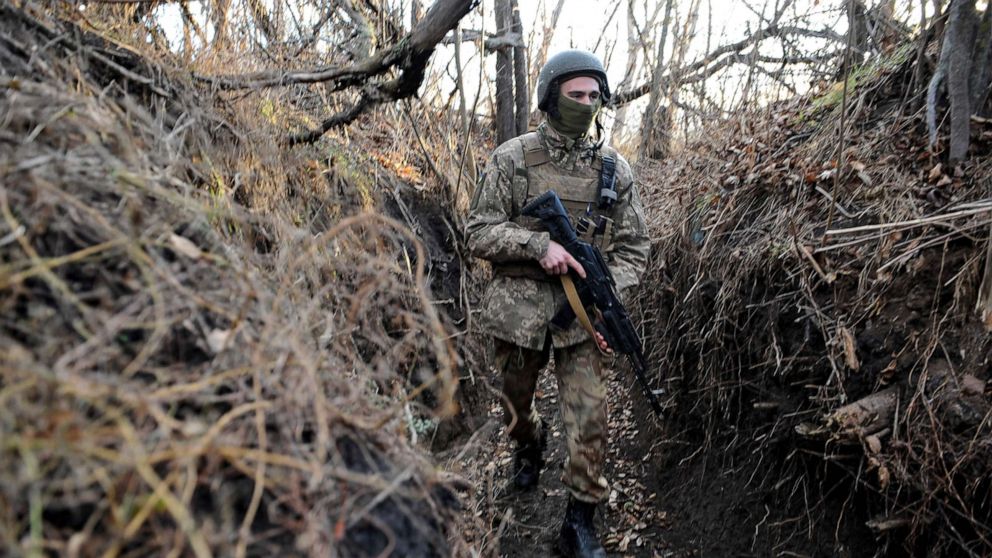Russia's buildup of troops near Ukraine sparks fears of attack: Analysis
Is Russia preparing to invade Ukraine?
Fears of invasion are greater now than at any time since Moscow first seized Crimea in 2014.
For the past month, the United States has been sounding the alarm that Russia has amassed more than 100,000 troops near eastern Ukraine and may be preparing to launch a major military incursion. Satellite imagery and videos posted to social media appear to show Russian armored units and artillery moving to the area. Ukraine’s military has also warned Russian forces could attack in late January or early February.
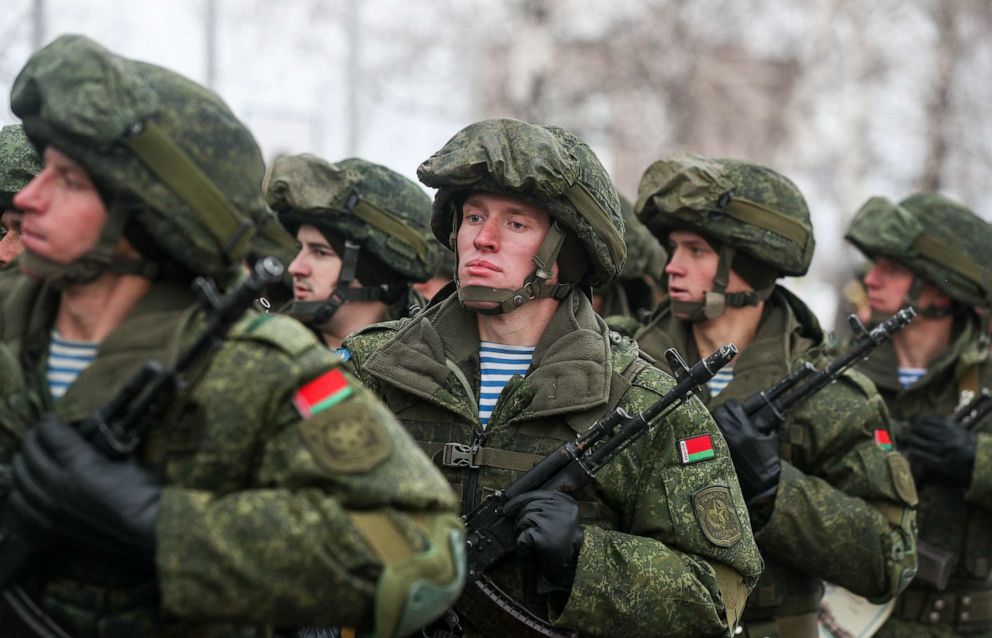
The short answer of course is no one knows if Russian President Vladimir Putin is really planning an attack. Russian experts are fiercely divided over the Kremlin’s intentions: Is the country bluffing or flexing its muscles to intimidate Ukraine and the U.S. into concessions? Or is it preparing a real invasion?
There have been war scares throughout seven-year conflict and this too could prove illusory. But the fears this time are different. Many analysts, including many who are normally skeptical of such scares, believe Putin’s calculus on Ukraine has shifted and the risk he will now use force is high. Those analysts believe the buildup is not just saber-rattling; it gives Russia an option to launch a real military intervention if Putin fails to get what he wants through threats.
“Although Russian President Vladimir Putin may once again be engaging in coercive diplomacy, this time around Moscow may not be bluffing. If no agreement is reached, the conflict may renew on a much larger scale,” Michael Kofman and Michael Kimmage wrote in Foreign Affairs this week. “The scenario of a wider war is entirely plausible.”
An invasion this time would be more dangerous than Russia’s seizure of Crimea, likely triggering the worst crisis between Moscow and the West in 40 years and carrying a risk of a wider conflict in Europe.
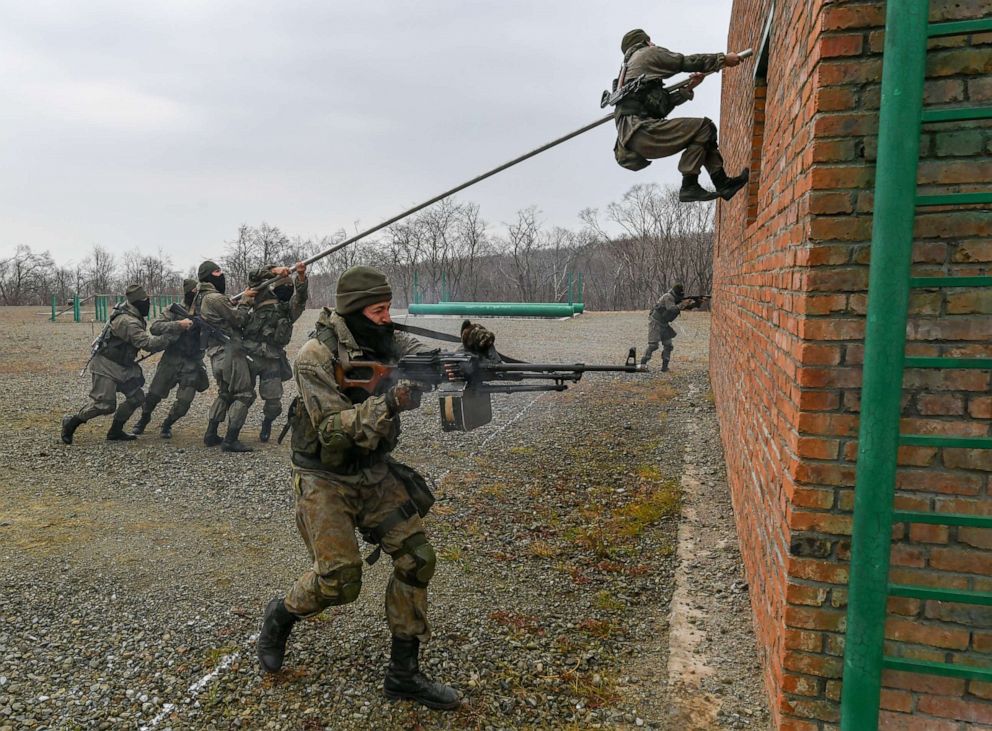
The world went through this already at the start of the year when Russia began the troop buildup. It turned out Putin was bluffing. Many experts believe it helped win him a summit with President Joe Biden.
Russia, however, has denied it is preparing to attack but has accused Ukraine of acting provocatively.
Most analysts caution the current buildup may again be linked to another potential summit between Putin and Biden, one the Kremlin is pressing to hold by the end of this year. The Kremlin is good at creating the illusion of a potential attack and experts warn against falling into the trap of believing it.
But the fears this time are different.
The U.S. and independent analysts are expressing greater anxiety now than last April. Russia’s rhetoric is more aggressive this time around, according to analysts.
Most experts believe Putin has not yet decided whether to use force. But at the root of the worries is that the Kremlin’s view of the conflict has crucially changed.
Why would Russia invade now?
This is the key question. The biggest argument is what would Putin gain. It would make a Russia a pariah, carrying major risks while likely achieving few of its objectives.
The reasons for Russia’s current buildup are the same for seizing Crimea—the Kremlin will not accept "losing" Ukraine and having it join NATO and the European Union.
The problem for the Kremlin is that Ukraine has been moving ever more firmly toward the West in recent years. Full membership in NATO is not on the cards but Ukraine has become closer with the alliance. The U.S. already supplies Ukraine with lethal weapons and Ukrainian troops train with NATO forces.
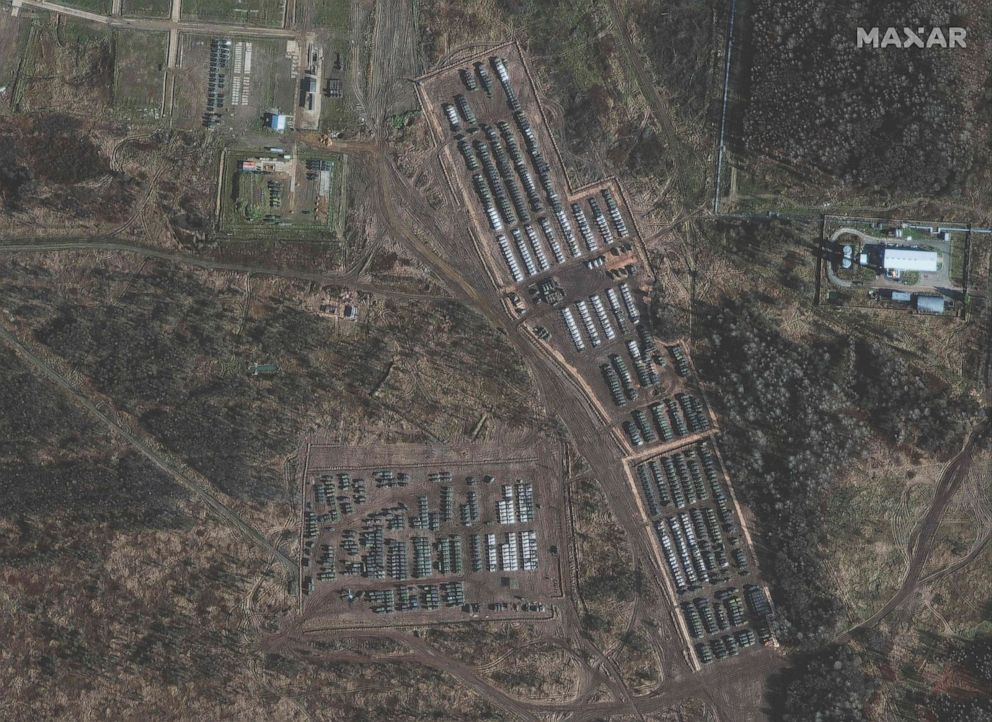
As Andrew Weiss and Eugene Rumer from the Carnegie Center recently wrote, “The Kremlin increasingly views Ukraine as a Western aircraft carrier parked just across” from southern Russia.
At the same time, Russia has come to see its diplomatic tools for keeping Ukraine close as non-functioning. In 2015, as Russian forces were inflicting heavily casualties, Moscow was able to force Ukraine to sign the so-called Minsk peace agreements. The deal obliged Kyiv to grant wide autonomy to the pro-Russian breakaway regions in its East. In practice, that would give Russia a lever inside Ukraine’s government, giving an effective veto over its efforts to join NATO or the EU.
Ukraine has never wanted to accept that and the agreements have been effectively dead for years. Ukraine’s president, Volodymyr Zelenskiy, meanwhile has turned to a hard-line approach to Russia.
The fear is that amid all this, Putin now feels Ukraine is drifting too far, too fast from Russia and that force is the only way to get Western countries and Kyiv to take Moscow’s demands seriously.
“Russian leaders have signaled that they have grown tired of diplomacy and find Ukraine’s growing integration with the United States and NATO intolerable,” wrote Kofman, an expert on Russian military policy, and Kimmage, a former State Department official on Russia/Ukraine policy. “The stage is set for Moscow to reset this equation through force—unless Moscow, Washington, and Kyiv are able to find a peaceful resolution.”
The Kremlin has signaled what it wants. Last week, Putin said Russia should seek “serious, long-term” security guarantees from the U.S. over Ukraine. In practice, that likely means a guarantee of no further NATO expansion and the curtailing of Western military assistance to Kyiv.
The fear among some analysts is whether Putin will use force if he doesn’t get those guarantees.
Experts in Moscow with close ties to the Russian foreign policy establishment have echoed those worries.
Fyodor Lukyanov, chairman of the Council of Foreign and Defense Policy, warned in an article this week that what's happening can become a “serious milestone in European history after the end of the Cold War.”
“The unfolding situation is dangerous because of the loss of a common understanding of what is happening,” he wrote.
A dangerous ingredient in all of this is Putin’s vision of Ukraine. Putin has repeatedly said he considers Ukrainians and Russians “one people” and the issue appears to have personal importance to him. In July, Putin published a 5,000-word article on Ukraine’s history where he questioned its right to exist as an independent state.
As the historian Sergey Plokhy has written, Ukraine’s departure from its sphere of influence will mean the end of the Kremlin’s vision of Russia as an imperial power that Putin has sought to restore.
Ukraine is “unfinished business” for Putin, Rumer and Weiss wrote.
What might happen?
The scenario most experts fear is Russia will use a false pretext of a supposed Ukrainian attack on the pro-Russian rebel territories to launch an invasion. Few believe Russia would try to seize Kyiv or occupy the whole country. What is seen as plausible is that Russia would try to inflict a devastating blow on Ukraine’s military and perhaps seize some territory, including major cities.
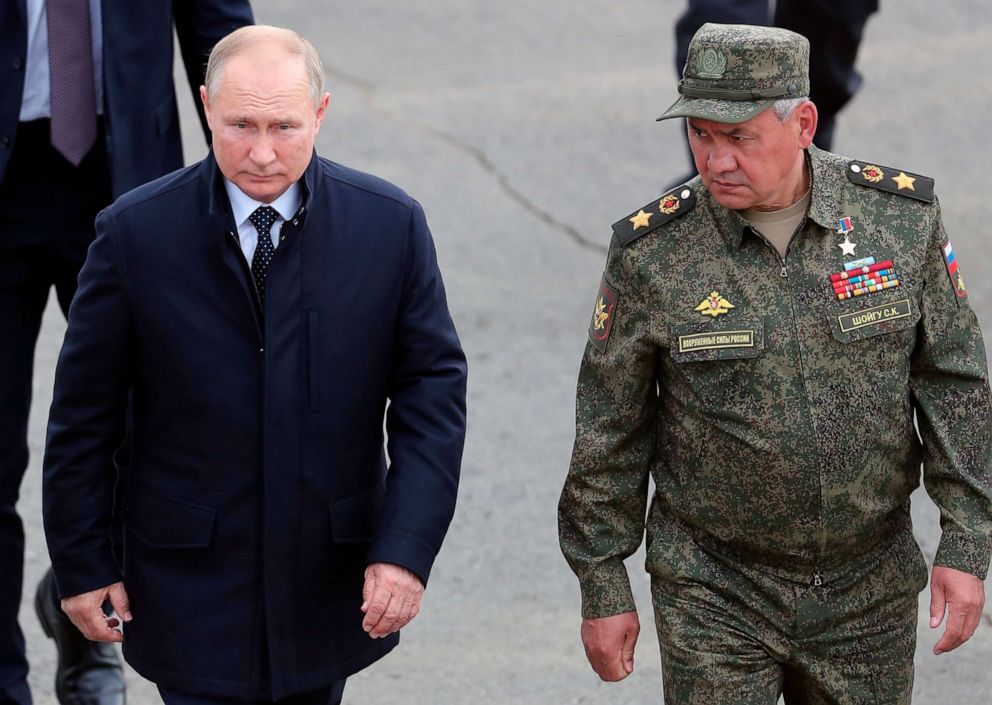
The idea would be a blow so painful that it would force Kyiv and NATO to scale back their cooperation. This is what Russia did in 2008, when it invaded Georgia.
Top Russian officials this week have been comparing the current situation to the run-up to the Georgia war, accusing Ukraine of preparing an attack. Some experts fear those comments are meant to lay the ground for a repeat of the Georgia invasion.
Will it happen?
Many experts argue it is still unlikely Putin will attack. Even those warning of the possibility say Putin may realize the costs outweigh the potential benefits.
But these experts are concerned how plausible an attack has become. What is frightening is the gulf that is opening up between what the West views as Russia’s rational interests around Ukraine and what Russia thinks they are.

“From the point of view of the balance of benefits and losses, neither side is interested in a real war,” Ivan Timofeyev, an analyst close to Russia’s foreign ministry, wrote in an article this week.
He added, "Therefore, it is hardly worth considering the war scenario as a likely one. However, history knows many examples when rational calculations have failed to put an end to escalation. There is only the hope that this isn’t the case here."
